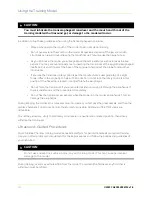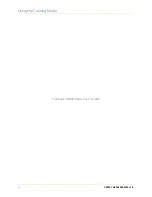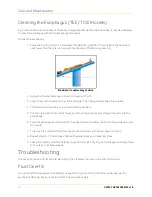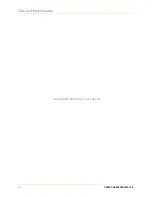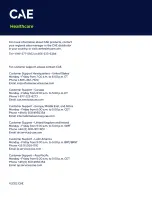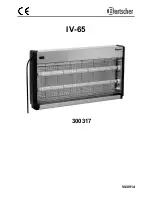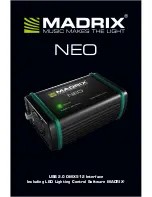
©2022 CAE 905K004752 v1.0
7
Using the Training Model
Using the Training Model
This section has information and instructions about the setup and use of the training model and any specific
training procedures.
Setup
Follow the guidelines below to unpack and set up your CAE Blue Phantom training model.
1. Open the shipping carton:
º
Use extreme caution with sharp tools, such as a box cutter, to avoid damage to the training
model or plastic shipping shell.
2. Unpack the training model:
º
Open the case and remove the training model. Use proper lifting techniques to prevent
bodily injury, as this model is heavy.
º
Make sure you support the head and neck of the model as you remove it from the case.
Excessive stress due to improver support can result in damage to the head or neck.
º
Review the equipment, accessories, and supplies. See the
Equipment
section of this guide
for a list of items included with this model.
3. Set up the training model:
º
Put the model in the supine position on a very stable patient bed, stretcher, or table rated
to handle an excess of 200 lbs (91 Kg).
º
Do not place the training model on an unstable platform. If it falls, it can cause serious injury
to people and damage the model.
º
Place the model on smooth surfaces only. Rough or uneven surfaces can leave impression
on the skin and damage the model.
º
Do not mark directly on the training model as this will permanently damage it.
Fluid Setup
The training model is shipped with minimal fluid in the fluid spaces. During periods of non-use, fluid may also
evaporate from inside the model. Before first use, you must add fluid and remove any air.
In these models, three tubes connect to the heart:
• one to fill the right heart
• one to fill the left heart
• one to fill and adjust fluid levels in the pericardial space
NOTE: Within the cardiac anatomy, only the pericardial space has dynamic fluid adjustment to create
different sizes of effusions. The tubes to the left and right heart are used only to refill those spaces if fluid
evaporates over time.
Summary of Contents for Blue Phantom Echocardiography and Pericardiocentesis Ultrasound Training Model
Page 1: ......
Page 2: ......
Page 4: ...Contents ii 2022 CAE 905K004752 v1 0 THIS PAGE INTENTIONALLY LEFT BLANK...
Page 10: ...Introduction 6 2022 CAE 905K004752 v1 0 THIS PAGE INTENTIONALLY LEFT BLANK...
Page 16: ...Using the Training Model 12 2022 CAE 905K004752 v1 0 THIS PAGE INTENTIONALLY LEFT BLANK...
Page 20: ...Care and Maintenance 16 2022 CAE 905K004752 v1 0 THIS PAGE INTENTIONALLY LEFT BLANK...
Page 21: ......














